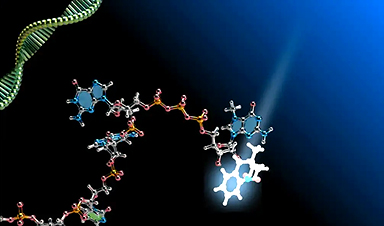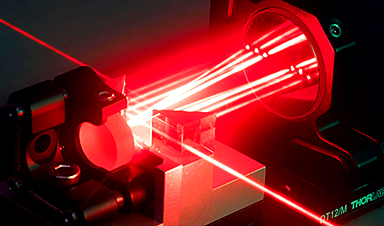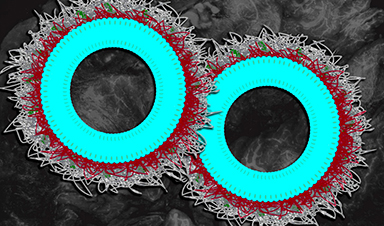A Japanese research team has introduced the 'Purecap' method, enabling the production of highly pure mRNA vaccines.
A research group from Japan has developed a method to produce highly active mRNA vaccines at high purity using a unique cap to easily separate the desired capped mRNA. This 'Purecap' technique extracted up to 100% pure Cap2-type mRNA, which showed 3-4 times better production of the protein that stimulates the immune system. These results open up the possibility of purer vaccines with a lower risk of inflammation caused by impurities. Their findings were published recently in the journal Nature Communications.
Potential of mRNA Vaccines
mRNA vaccines have been used successfully as therapy against variants of the coronavirus. This has given researchers hope for their future use as a cancer vaccine. However, the purity of vaccines hinders this goal because impurities can trigger the immune system. This may cause inflammation around the injection site, a common side effect of vaccination.
Understanding Vaccine Impurities
Impurities in mRNA vaccines are often introduced in the capping stage. During this stage, a cap structure is added that improves the translation of mRNA and protects and stabilizes it. Caps can only be added to single-stranded mRNA, so ideally a vaccine should contain 100% pure single-stranded mRNA. However, unwanted double-strands of mRNA may be present, reducing its purity.
As single- and double-stranded mRNAs have different properties, they can be separated using a technique called reversed-phase high-performance liquid chromatography (RP-HPLC). This technique separates mRNAs on the basis of their hydrophobicity or hydrophilicity, i.e., their repulsion to or attraction to water.
Research Methodology and Findings
A research group led by Professor Hiroshi Abe, Project Assistant Professor Masahito Inagaki, and Project Associate Professor Naoko Abe of the Graduate School of Science, Nagoya University, in collaboration with Tokyo Medical and Dental University, used a unique PureCap method to introduce a hydrophobic tag at the capping stage. The tagged mRNA was easily separated at the RP-HPLC stage. The tag was then easily removed by light treatment, resulting in a 98%-100%-pure vaccine.
"We were very excited about the result when we saw on the chart that the RP-HPLC process had separated completely the capped and uncapped RNAs," Hiroshi Abe said. "For a coronavirus mRNA, which is 4247 bases long, we successfully used the PureCap method to produce capped mRNA with over 98% purity."
The research group paid particular attention to a group of cap structures that exist in animal and plant cells, called Cap0, Cap1, and Cap2. Although Cap2 is found in animal and plant cells, the evaluation of its function has been difficult because there was no way to obtain pure capped mRNA to ensure a fair test.
"The Cap structure used in mRNA vaccines has so far been limited to Cap0 and Cap1 types. However, we used our technique to manufacture Cap0, Cap1, and Cap2-type structures," Abe said. "Highly purified Cap0, Cap1, and Cap2-type mRNA synthesized using the PureCap method showed lower immunostimulatory activity compared to mRNAs synthesized using conventional techniques showing their potential use in pharmaceuticals."
As viruses mostly produce Cap1 mRNA, the immune system is less stimulated by Cap2. This suggests that a vaccine that uses Cap2 would be less likely to cause unwanted side effects such as inflammation when it is injected. However, it would still be able to create viral proteins when transcribed that make the vaccine effective.
Benefits of the Cap2 Structure
The group used Purecap to create Cap2 mRNA and analyzed its protein synthesis capacity. They found that Cap2 mRNA produced 3-5 times more protein than Cap1 mRNA, which would enhance the immune response. They also showed that their Cap2-type mRNAs caused lower stimulation of the inflammatory response than mRNAs synthesized using conventional techniques.
"Conventional mRNA vaccine production methods could not prepare capped mRNA with high purity, raising concerns about reduced protein synthesis and impurity-derived inflammatory reactions," Abe said.
"The PureCap method solves these problems by selectively purifying only capped mRNA. Furthermore, the Cap2-type structure created using this technique is more efficient in protein synthesis and less irritating to the immune system. This technique has the potential to improve the safety and efficacy of mRNA vaccines. It is a revolutionary advance toward the practical application of mRNA medicine, as well as deepening our understanding of the fundamentals of mRNA science."
Reference: "Cap analogs with a hydrophobic photocleavable tag enable facile purification of fully capped mRNA with various cap structures" by Masahito Inagaki, Naoko Abe, Zhenmin Li, Yuko Nakashima, Susit Acharyya, Kazuya Ogawa, Daisuke Kawaguchi, Haruka Hiraoka, Ayaka Banno, Zheyu Meng, Mizuki Tada, Tatsuma Ishida, Pingxue Lyu, Kengo Kokubo, Hirotaka Murase, Fumitaka Hashiya, Yasuaki Kimura, Satoshi Uchida and Hiroshi Abe, 11 May 2023, Nature Communications.
DOI: 10.1038/s41467-023-38244-8
News
GLP-1 Drugs Like Ozempic Work, but New Research Reveals a Major Catch
Three new Cochrane reviews find evidence that GLP-1 drugs lead to clinically meaningful weight loss, though industry-funded studies raise concerns. Three new reviews from Cochrane have found that GLP-1 medications can lead to significant [...]
How a Palm-Sized Laser Could Change Medicine and Manufacturing
Researchers have developed an innovative and versatile system designed for a new generation of short-pulse lasers. Lasers that produce extremely short bursts of light are known for their remarkable precision, making them indispensable tools [...]
New nanoparticles stimulate the immune system to attack ovarian tumors
Cancer immunotherapy, which uses drugs that stimulate the body’s immune cells to attack tumors, is a promising approach to treating many types of cancer. However, it doesn’t work well for some tumors, including ovarian [...]
New Drug Kills Cancer 20,000x More Effectively With No Detectable Side Effects
By restructuring a common chemotherapy drug, scientists increased its potency by 20,000 times. In a significant step forward for cancer therapy, researchers at Northwestern University have redesigned the molecular structure of a well-known chemotherapy drug, greatly [...]
Lipid nanoparticles discovered that can deliver mRNA directly into heart muscle cells
Cardiovascular disease continues to be the leading cause of death worldwide. But advances in heart-failure therapeutics have stalled, largely due to the difficulty of delivering treatments at the cellular level. Now, a UC Berkeley-led [...]
The basic mechanisms of visual attention emerged over 500 million years ago, study suggests
The brain does not need its sophisticated cortex to interpret the visual world. A new study published in PLOS Biology demonstrates that a much older structure, the superior colliculus, contains the necessary circuitry to perform the [...]
AI Is Overheating. This New Technology Could Be the Fix
Engineers have developed a passive evaporative cooling membrane that dramatically improves heat removal for electronics and data centers Engineers at the University of California San Diego have created an innovative cooling system designed to greatly enhance [...]
New nanomedicine wipes out leukemia in animal study
In a promising advance for cancer treatment, Northwestern University scientists have re-engineered the molecular structure of a common chemotherapy drug, making it dramatically more soluble and effective and less toxic. In the new study, [...]
Mystery Solved: Scientists Find Cause for Unexplained, Deadly Diseases
A study reveals that a protein called RPA is essential for maintaining chromosome stability by stimulating telomerase. New findings from the University of Wisconsin-Madison suggest that problems with a key protein that helps preserve chromosome stability [...]
Nanotech Blocks Infection and Speed Up Chronic Wound Recovery
A new nanotech-based formulation using quercetin and omega-3 fatty acids shows promise in halting bacterial biofilms and boosting skin cell repair. Scientists have developed a nanotechnology-based treatment to fight bacterial biofilms in wound infections. The [...]
Researchers propose five key questions for effective adoption of AI in clinical practice
While Artificial Intelligence (AI) can be a powerful tool that physicians can use to help diagnose their patients and has great potential to improve accuracy, efficiency and patient safety, it has its drawbacks. It [...]
Advancements and clinical translation of intelligent nanodrugs for breast cancer treatment
A comprehensive review in "Biofunct. Mater." meticulously details the most recent advancements and clinical translation of intelligent nanodrugs for breast cancer treatment. This paper presents an exhaustive overview of subtype-specific nanostrategies, the clinical benefits [...]
It’s Not “All in Your Head”: Scientists Develop Revolutionary Blood Test for Chronic Fatigue Syndrome
A 96% accurate blood test for ME/CFS could transform diagnosis and pave the way for future long COVID detection. Researchers from the University of East Anglia and Oxford Biodynamics have created a highly accurate [...]
How Far Can the Body Go? Scientists Find the Ultimate Limit of Human Endurance
Even the most elite endurance athletes can’t outrun biology. A new study finds that humans hit a metabolic ceiling at about 2.5 times their resting energy burn. When ultra-runners take on races that last [...]
World’s Rivers “Overdosing” on Human Antibiotics, Study Finds
Researchers estimate that approximately 8,500 tons of antibiotics enter river systems each year after passing through the human body and wastewater treatment processes. Rivers spanning millions of kilometers across the globe are contaminated with [...]
Yale Scientists Solve a Century-Old Brain Wave Mystery
Yale scientists traced gamma brain waves to thalamus-cortex interactions. The discovery could reveal how brain rhythms shape perception and disease. For more than a century, scientists have observed rhythmic waves of synchronized neuronal activity [...]





















